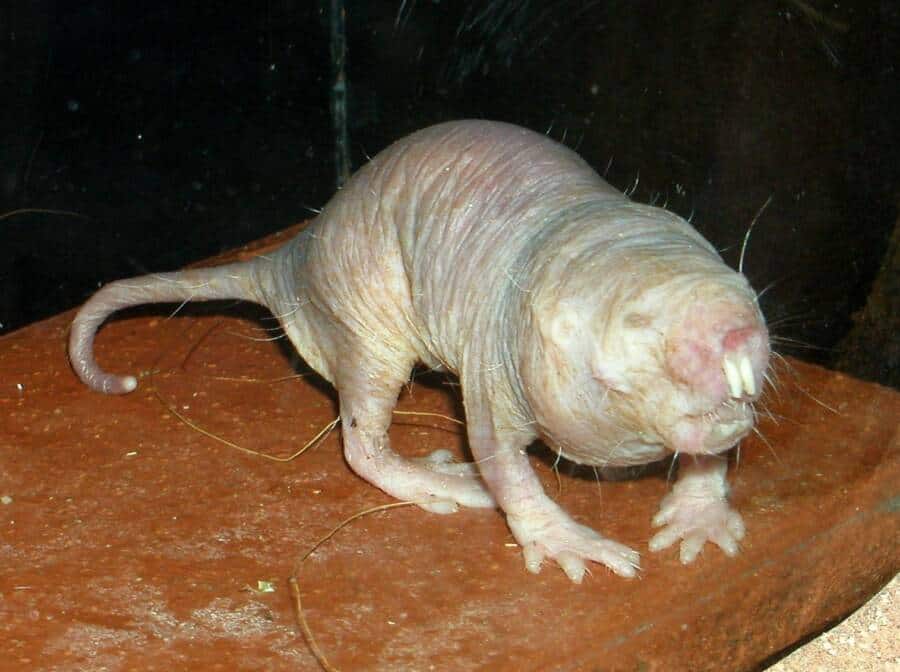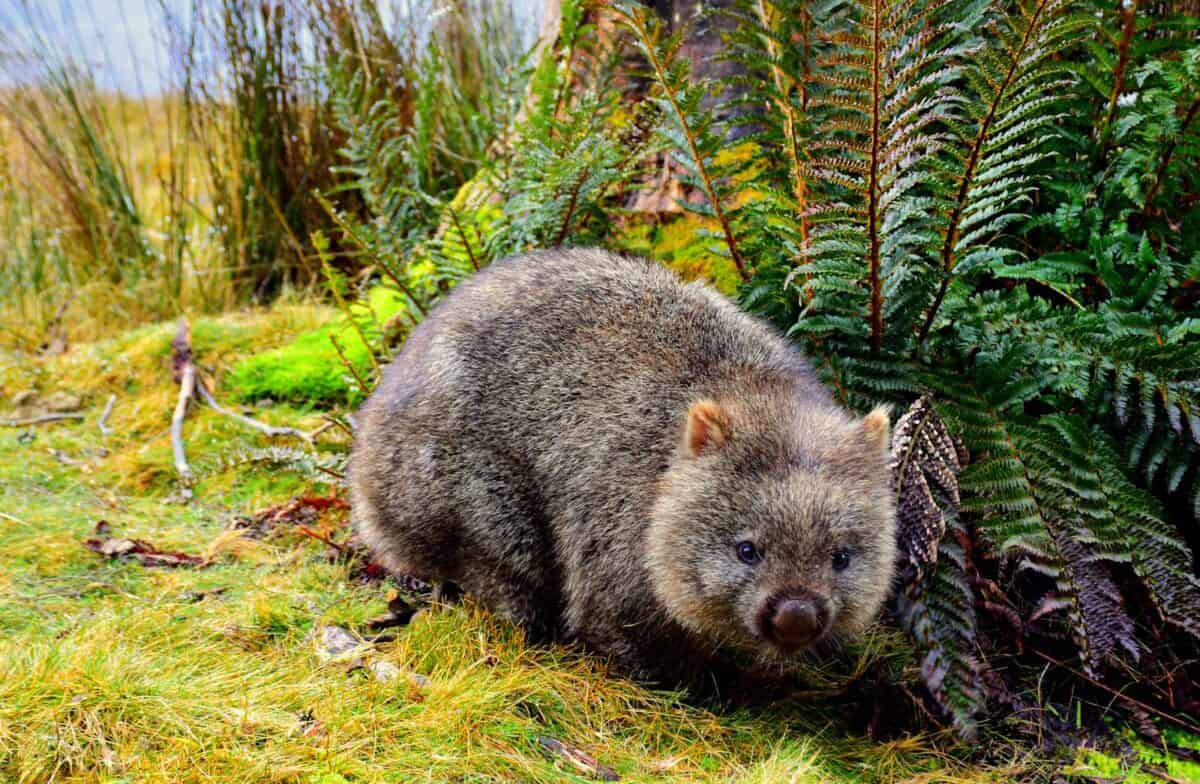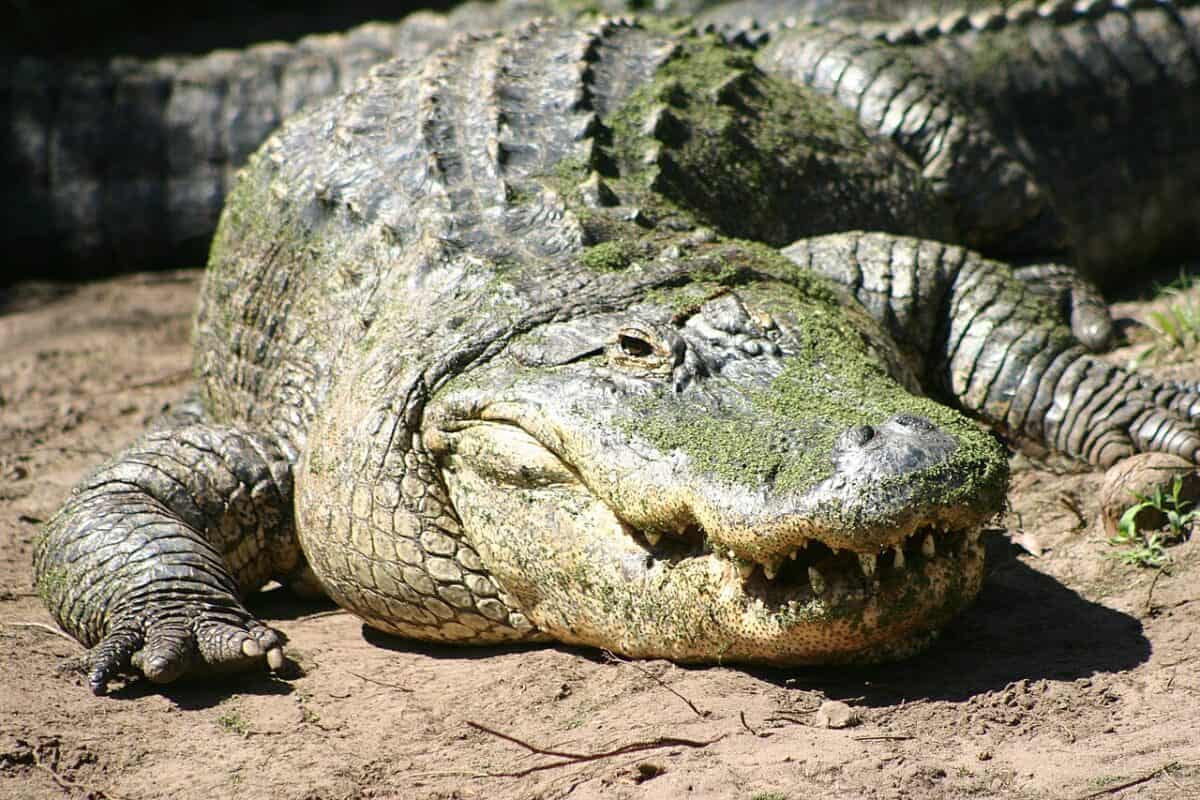When we think of animal homes, many of us imagine small burrows or compact nests. However, in the animal kingdom, several remarkable creatures construct underground labyrinths that rival or even exceed the size of human houses. These architectural marvels serve as protection from predators, shelter from extreme weather conditions, and provide space for raising young. From desert-dwelling mammals to forest-dwelling insects, these animals have perfected the art of underground living through millions of years of evolution. Let’s explore 14 extraordinary animals that create subterranean complexes so vast and intricate that they make our human dwellings seem modest by comparison.
13. Prairie Dogs and Their Underground Cities

Despite their small size, prairie dogs construct some of the most extensive underground communities in the animal kingdom. A single prairie dog colony or “town” can span hundreds of acres and house thousands of individuals. The largest documented prairie dog town covered approximately 25,000 square miles in Texas during the late 19th century and was estimated to contain 400 million prairie dogs. Their burrow systems typically extend 3-10 feet below ground but can reach depths of 16 feet. Each burrow includes specialized chambers for sleeping, nursing young, storing food, and even designated toilet areas. The complex tunnel networks include multiple entrance holes, escape tunnels, listening posts near exits, and underwater passages that prevent flooding. Prairie dogs even incorporate air circulation systems that maintain oxygen levels and regulate temperature throughout their underground metropolis.
12. The Engineering Marvel of Naked Mole-Rat Colonies

Naked mole-rats create perhaps the most impressive subterranean network relative to their body size. These eusocial mammals live in colonies of up to 300 individuals within tunnel systems that can extend for 2-3 miles in total length. Their burrows feature multiple chambers dedicated to specific functions: nesting areas, food storage rooms, bathroom chambers, and even a special nursery chamber for the queen’s pups. What makes their engineering particularly remarkable is the precise temperature and humidity control within their burrows, maintaining a stable environment regardless of external conditions. Scientists have discovered that some naked mole-rat colonies have occupied the same elaborate tunnel systems for over 20 years, continually expanding and refining their underground empire as the colony grows. Their tunnels are typically 1.5-3 inches in diameter, perfectly sized for their hairless bodies to move through in both forward and backward directions with equal ease.
11. European Badger Setts Multi-Generational Mansions

European badgers construct elaborate underground homes called setts that can be truly enormous. The largest documented sett in the United Kingdom contained over 50 entrance holes and stretched for nearly 3,000 square feet, with over 800 meters of tunnels. These remarkable underground complexes often feature multiple levels of tunnels connecting various chambers used for different purposes—bedrooms lined with dry grass and leaves, food storage areas, and nurseries for cubs. Perhaps most impressive is that badger setts are often inherited through generations, with some documented setts being continuously occupied and expanded for over 100 years. The main tunnels are typically 4-5 feet below ground level and are about 1 foot in diameter—wide enough for these stocky mammals to move comfortably. During excavation, badgers can move up to 40 pounds of soil in a single night, demonstrating their incredible digging efficiency.
10. Giant Armadillo’s Spacious Underground Retreats

The giant armadillo, the largest member of the armadillo family, digs burrows that are as impressive as its size suggests. These solitary creatures excavate conical burrows with entrances measuring up to 16 inches in diameter and tunnels extending 20-65 feet in length. The main chamber, where the animal sleeps and seeks refuge, can be 6 feet wide and 5 feet high—spacious enough for a human to sit comfortably inside. What makes their burrows particularly remarkable is how they benefit the wider ecosystem; researchers have documented over 80 different species, from reptiles to mammals, using abandoned giant armadillo burrows as shelter. These armadillos don’t stay in one place for long, typically creating a new burrow every few days as they move through their extensive home ranges, which can cover over 1,500 acres. This behavior results in dozens of large burrows throughout the landscape, essentially creating “apartment complexes” for countless other creatures.
9. Aardvark The African Earth Pig’s Excavation Prowess

Aardvarks are prodigious diggers, creating multiple burrows throughout their territory that can reach truly house-sized proportions. Their main residence burrows typically feature a single entrance leading to a tunnel that extends 10-13 feet below ground before opening into a large central chamber measuring approximately 6 feet in diameter. These primary burrows can reach total lengths of over 40 feet and have multiple chambers branching off the main passage. What makes aardvarks especially prolific is that they dig not only main residence burrows but also numerous temporary burrows for quick shelter, resulting in an individual aardvark potentially creating over 40 burrows throughout its territory. Their digging efficiency is staggering—an aardvark can excavate a 3-foot-deep burrow in just 5 minutes using their powerful front claws and shovel-shaped snout. Like giant armadillo burrows, abandoned aardvark tunnels provide essential habitat for other species, with over 20 different animals documented using these structures, including pythons, warthogs, and various small mammals.
8. Wombat Warrens Underground Fortresses of Australia

Wombats, Australia’s burrowing marsupials, create extensive underground tunnel systems that can span over 650 feet in length with multiple entrances and chambers. These burrows, called warrens, can house several wombats and often have multiple levels with specialized chambers for sleeping, raising young, and escaping extreme temperatures. The engineering of wombat burrows is particularly impressive—they maintain a consistent temperature around 68-72°F year-round, regardless of external conditions that can range from freezing to over 100°F. Wombat warrens feature narrow passages that widen into chambers up to 3 feet in diameter and 6 feet long, providing ample living space. Their burrow entrances are typically just wide enough for the wombat to squeeze through, creating a defensive bottleneck against predators. The walls of the burrows are highly compacted by the wombats’ powerful bodies, making them incredibly stable—some wombat warrens have been documented to last for decades, passed down through generations of these tenacious marsupials.
7. The Mega-Structures of Leaf-Cutter Ant Colonies

Leaf-cutter ants may be tiny individually, but their colonies construct underground networks that dwarf many human homes. The largest documented leaf-cutter ant nest excavated by scientists contained over 8 million ants and had a volume of 67 cubic meters—equivalent to the interior space of a modest house. These incredible structures extend 15-20 feet below ground and can cover 320-375 square feet in surface area. The complexity of these nests is staggering, featuring hundreds of interconnected chambers with specialized functions: nurseries for raising larvae, massive gardens for growing the fungus they feed on, waste disposal chambers, and even ventilation tunnels that regulate temperature and oxygen levels. The excavation effort is equally impressive—scientists estimate that building a mature nest requires moving approximately 40 tons of soil, equivalent to humans digging a tunnel from New York to Los Angeles using only teaspoons. These ant metropolises are so substantial that researchers often need to pour several tons of concrete to create complete casts of the structures for study.
6. African Crested Rats and Their Extensive Tunnel Networks

The African crested rat constructs elaborate burrow systems that belie its modest size. These rodents create multi-chambered underground complexes with tunnels extending 65-100 feet in total length and reaching depths of 5-6 feet below the surface. Their burrows typically feature 5-8 entrance holes strategically placed for quick escape, with some entrances hidden under rocks or vegetation. What makes these burrows particularly sophisticated is their internal organization—separate chambers exist for food storage, sleeping, nursing young, and even dedicated grooming areas where they apply toxic plant compounds to their specialized fur. The main living chambers can measure up to 3 feet in diameter, providing ample space for these foot-long rodents. Unlike many burrowing animals that prefer consistent soil types, African crested rats demonstrate remarkable adaptability, constructing their elaborate homes in various terrains from forest floors to rocky hillsides. Their burrows are so well-constructed that they often remain intact for years, even when abandoned, providing shelter for numerous other species.
5. American Alligator’s Massive “Gator Holes”

American alligators create enormous burrows known as “gator holes” that qualify as some of the largest single-animal excavations in North America. These impressive structures can measure up to 65 feet in length with a central den area up to 8 feet in diameter—large enough to accommodate a 12-foot alligator with room to spare. The entrances to these burrows are typically underwater, leading to an interior chamber that remains above the water line, allowing the alligator to breathe while remaining hidden. During drought conditions, these gator holes become crucial oases, collecting and retaining water that supports not just the alligator but countless other species in the ecosystem. The excavation process is remarkable—alligators primarily use their powerful tails and bodies to push and compact soil rather than their limbs. Some gator holes have been documented to persist for decades, becoming permanent features of wetland landscapes. These structures are so significant that ecologists consider alligators to be “ecosystem engineers,” as their burrows fundamentally alter wetland hydrology and provide habitat for fish, amphibians, and other aquatic organisms.
4. Termite Mounds The World’s Tallest Non-Human Structures

While most impressive animal burrows extend downward, termite mounds represent a case where underground networks extend dramatically upward as well. The Cathedral termite mounds of northern Australia can reach heights of 20 feet above ground, but this impressive structure is merely the visible portion of an extensive underground network that can extend 40 feet below the surface. The entire structure, including both above and below-ground components, can contain millions of termites living in a complex society. These mounds are engineering marvels featuring sophisticated ventilation systems that maintain internal temperatures within 1°C despite external fluctuations of over 30°C. The underground portion contains numerous specialized chambers including royal quarters for the queen (who can lay 30,000 eggs daily), nurseries for young, food storage areas, fungus gardens, and even “cemetery” chambers for disposing of dead termites. The construction material—a mixture of soil, termite saliva, and feces—creates a substance comparable to concrete in strength. Some termite colonies have been continuously inhabited for over 70 years, with the entire structure weighing several tons and containing hundreds of interconnected chambers.
3. The Giant Subterranean Networks of Gopher Tortoises

Gopher tortoises create burrows that are disproportionately massive compared to their body size. The average gopher tortoise burrow measures 15-30 feet in length and 6-10 feet deep, though exceptional burrows extending over 50 feet have been documented. These burrows maintain a consistent width approximating the tortoise’s shell dimensions (about 1-2 feet) and feature a large chamber at the end where the tortoise rests. What makes these burrows particularly remarkable is their longevity and ecological importance—a single tortoise may create and maintain multiple burrows throughout its lifetime, which can exceed 60 years. Researchers have documented over 350 different species using gopher tortoise burrows as shelter, from insects to mammals and reptiles, earning the gopher tortoise the title of “keystone species.” The excavation process is painstakingly slow, with tortoises using their shovel-like front legs to dig and their plastron (lower shell) to compact the floor. Their burrows are so significant for ecosystem health that they receive legal protection in states where the tortoise is found, with hefty fines for destroying or disturbing these subterranean sanctuaries.
2. The Ocean’s Burrowers Goby Fish and Pistol Shrimp Partnerships

One of the most fascinating burrowing relationships exists not on land but under the ocean floor, where certain goby fish species partner with pistol shrimp to create extensive burrow systems in marine sediments. These interspecies teams construct complex tunnels extending up to 6 feet in length with multiple chambers and entrances—impressive dimensions considering the shrimp typically measures just 1-2 inches long. The division of labor is remarkable: the nearly-blind shrimp does most of the excavation work using its specialized claws to move sand and create tunnel supports, while the goby fish serves as a lookout, warning of approaching predators through specific tail movements. These underwater burrows feature multiple escape routes, chambers for resting, and even “windows” near the surface that allow water exchange without exposure. The construction is so substantial that a single burrow system can stabilize several square meters of ocean floor against current erosion. Some partnerships maintain and expand the same burrow for several years, creating a permanent underwater residence that benefits both species and provides shelter for numerous smaller marine organisms that could never excavate such structures themselves.
1. Beavers Masters of Aquatic Burrow Complexes

While beavers are renowned for their dams and lodges, less known are their impressive bank burrows—massive underground complexes excavated into the banks of rivers and lakes. These burrows begin with underwater entrances for protection, then slope upward into dry chambers that can extend 50 feet inland from the water’s edge. The main living chamber, located above the water line, can measure 8 feet in diameter and house an entire beaver family. What makes beaver burrows architectural marvels is their structural engineering—they incorporate tree roots into tunnel supports and create air vents disguised within vegetation for ventilation. Some beaver bank burrows feature multiple levels connected by sloping tunnels, with separate chambers for different family activities including sleeping, grooming, and raising kits. These structures are so substantial that they can significantly alter riparian ecosystems, creating protected habitats for countless water-dependent species. The most impressive beaver bank burrows, occupied by generations of beavers over decades, can involve the excavation of several tons of soil and extend for over 100 feet of total passageway length, making them comparable to modest human homes in total enclosed space.
Conclusion: The Marvel of Underground Architecture

These 14 extraordinary animals demonstrate nature’s incredible architectural abilities, creating underground structures that rival or exceed human dwellings in size, complexity, and engineering sophistication. Their burrows represent millions of years of evolutionary adaptation, providing optimal solutions for survival challenges including predator avoidance, climate control, and family raising. What’s particularly fascinating is how these massive underground structures often benefit entire ecosystems, providing shelter for numerous other species and sometimes even altering landscape hydrology, soil composition, and plant distribution. As human development increasingly encroaches on natural habitats, understanding and preserving these remarkable underground worlds becomes ever more important—they represent not just animal homes but entire ecosystems and billions of years of evolutionary engineering. The next time you walk across seemingly ordinary ground, remember that beneath your feet might exist vast underground mansions housing some of nature’s most innovative architects.
- 10 Common Chicken Behaviors and What They Mean - August 9, 2025
- 14 Creatures That Can Freeze and Thaw Back to Life - August 9, 2025
- 10 Animals That Risked Their Lives to Save Humans - August 9, 2025

